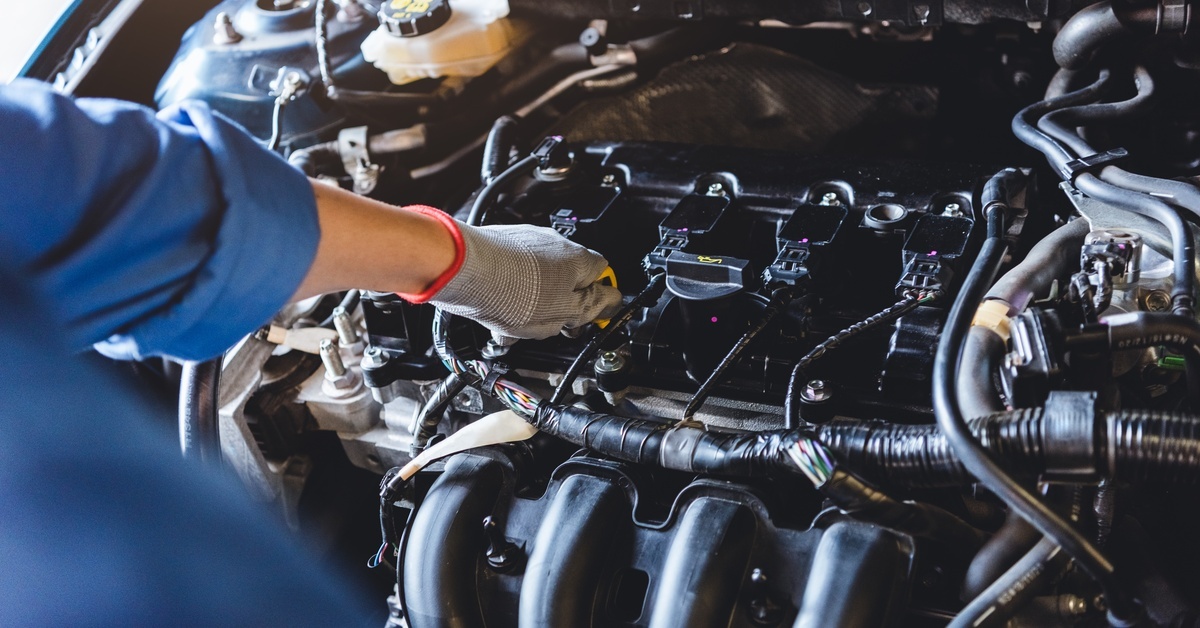A vehicle's engine generates a substantial amount of heat. Managing this thermal energy remains a fundamental aspect of engine performance and longevity. Without proper thermal regulation, components can warp, seize, or fail, leading to costly repairs. While the cooling system, including the radiator and engine coolant, directly addresses heat, lubricants provide a secondary, yet equally important, cooling function.
Understanding how automotive lubricants help prevent overheating reveals their multifaceted role in protecting your engine. Continue reading to learn how these specialized fluids help create a cooler, more efficient engine environment for vehicle owners, lube shop operators, and industrial fleet managers.
Heat Transfer and Dissipation
One of the primary ways lubricants manage engine temperature is by acting as a heat transfer medium. As oil circulates through the engine, it flows over and through hot components, absorbing thermal energy in the process.
Heat Absorption from Critical Components
The combustion process generates extreme temperatures, particularly at the pistons, cylinder walls, and bearings. These areas often experience temperatures that the primary cooling system cannot reach effectively.
- Pistons: As pistons rush within the cylinders, they generate intense heat from both combustion and friction. Oil sprayed onto the underside of the piston crown absorbs a large amount of this heat.
- Bearings: Crankshaft and connecting rod bearings operate under high pressure and speed. The thin film of oil separating these components carries away heat generated by friction, preventing metal-to-metal contact and thermal damage.
- Cylinder Walls: Lubricants create a protective film on cylinder walls that reduces friction and absorbs heat, which is transferred away as the oil circulates back to the sump.
Transporting Heat Away
After absorbing heat, the oil's journey continues. It carries the thermal energy away from the hottest parts of the engine and transports it to the oil pan, also known as the sump. The sump's large surface area allows the heat to dissipate into the surrounding air.
In many high-performance or heavy-duty vehicles, an oil cooler further aids this process. The oil passes through this small radiator, where airflow removes even more heat before the lubricant recirculates through the engine. This continuous cycle of heat absorption and dissipation keeps operating temperatures within a safe range.

Friction Reduction
Friction between moving parts is a main source of heat in any engine. This heat can cause wear, reduce efficiency, and possibly lead to engine failure if not controlled. Lubricants help reduce heat production, protect engine parts from excessive wear, and enhance overall engine performance and lifespan.
Creating a Protective Film
Engine oil forms a thin, durable film between moving metal surfaces. This layer prevents direct contact, allowing parts to glide smoothly over one another instead of grinding against each other. Key areas where this occurs include:
- Between pistons and cylinder walls
- Within crankshaft and camshaft bearings
- Throughout the valvetrain, including lifters and rocker arms
By reducing the coefficient of friction, high-quality automotive oils and lubricants lower the amount of energy converted into waste heat. Less friction means a cooler-running engine and less wear on components over time.
Viscosity's Role in Friction Management
The viscosity of an oil, its resistance to flow, is engineered to provide optimal friction reduction across a range of operating temperatures.
- At Low Temperatures: The oil must remain fluid enough to circulate quickly upon startup, providing immediate lubrication.
- At High Temperatures: The oil must maintain sufficient thickness to keep metal surfaces separated under pressure.
An oil with the wrong viscosity can lead to increased friction. If it's too thin, the protective film can become brittle and break down. If it's too thick, it creates excessive drag, which itself generates heat. Using the manufacturer-recommended viscosity grade is paramount for effective friction and heat management.
Preventing Sludge and Deposits
Cleanliness inside an engine contributes to its ability to stay cool. Over time, oil can break down due to high temperatures and oxidation, leading to the formation of sludge, varnish, and other harmful deposits.
The Function of Detergents and Dispersants
Modern automotive oils and lubricants contain a sophisticated package of additives, including detergents and dispersants.
- Detergents: These additives help neutralize acids and remove deposits from hot surfaces, preventing them from adhering to components.
- Dispersants: These work to suspend contaminants within the oil, keeping them from clumping together to form sludge. The suspended particles are then carried to the oil filter, where they can be removed from circulation.
How Cleanliness Affects Heat Transfer
Deposits and sludge act as insulators. When they coat internal engine parts, they trap heat and prevent the lubricant from effectively absorbing and carrying it away. This insulation can create localized hot spots, leading to premature wear and potential component failure.
By keeping internal surfaces clean, the additive package in a quality lubricant ensures that heat transfer remains efficient, supporting the overall cooling process. An engine that is clean on the inside is better equipped to manage its temperature. Understanding how automotive lubricants help prevent overheating involves appreciating their role in maintaining internal cleanliness for optimal thermal performance.
Maintaining Oil Integrity
For a lubricant to effectively perform all its functions, it must maintain its chemical stability and physical integrity even under the severe conditions inside an engine. This includes resisting breakdown at high temperatures and pressures, as well as enduring exposure to combustion byproducts like acids, soot, and metal particles, which continuously challenge the oil's performance and longevity.
Resistance to Thermal Breakdown
Quality engine oils use stable base stocks and robust additives to resist thermal breakdown. When oil breaks down, it loses its ability to lubricate properly and transfer heat effectively. Its viscosity changes, and it can no longer form a strong protective film. This leads to increased friction, and consequently, more heat is generated.
Oxidation Stability
Oxidation occurs when oil reacts with oxygen at high temperatures, a process that accelerates oil degradation and leads to thickening and the formation of sludge. Antioxidant additives are blended into the formulation to slow this process, extending the oil’s effective service life and ensuring it continues to protect and cool the engine as intended.

Keep Your Vehicle in Top Shape
Selecting the appropriate lubricants for your vehicles or equipment is crucial for ensuring reliable operation. Whether you're an individual car owner or managing a fleet, knowing the roles of these fluids enables smarter maintenance choices. Santie Oil Company offers a large range of lubricants for all automotive models, from small to large, as well as for industrial and military purposes. Reach out to us for expert guidance to identify the exact product suited to your needs.

